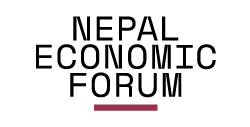Today’s Challenges
When I talk to finance colleagues across industries, many of them still face obstacles in embracing digital transformation. Many of them are still living with legacy systems that were created decades ago. They are stuck with static reports and are not able to drill down to find insights.
What is important to realize is that data is the new strategic asset for companies. The amount of data is doubling every year in the world and many of us have not yet created our “single source of the truth”. Business is becoming more complex every day, which is why having old tools that were built for old business models is not helpful. For example, finance processes are still manual which are subject to human errors. Finally, as the world grows, there are new business risks and threats, due to which there is a need for more regulations.
What is Digital Transformation?
Digital transformation is the incorporation of digital technology into various aspects of business, essentially changing how it operates and delivers value. It is the move from the physical to digital, disrupting existing business models and creating new ones. Simply put, this is about looking at all the processes and seeing how we can do things better, efficiently, and effectively. The journey is about taking data and turning it into action while adding value to the business in the fastest and most relevant way. This is also seen as the “Fourth Industrial Revolution” that will transform many facets of our lives, including how we work and socialize with one another.
The Journey
As Microsoft has evolved over the last 48 years, so has the finance function. Early on in our journey of digital transformation in the early 2000s, we realized it is essential to have One Source, One Version and One location. Thereby, we launched initiatives to have those fundamentals in place. First came a project dubbed One Finance to centralize processes into regional operating centers and outsource transactional work in Accounts Payable, Procurement, Accounting and specifically tackle the statistics and tax area. Second, we embarked on a journey called CORE Finance summarized as “discipline at the core and flexibility on the edges” with the key objective of having data governance. This allowed one version of truth enabling flexible reporting at all levels of business while still explicitly adhering to corporate standards.
With these foundations in place, it helped us with Business Intelligence (BI). We started with static reports that could only tell “what happened”. Manual processes were still very pronounced. Then Power BI came along, allowing interactive reporting, making meetings much more dynamic, and helping us understand “why it happened”. But we still didn’t have tools to help predict the future. With Machine Learning, we could learn from the past to predict the future. We could tell “what will happen”. The distance between data and action is shorter now. Finally with Machine Learning with bots, we get to the position that we can say “what to do”, automating the decision-making process and moving really fast from data to decision.
Economics
In terms of economics, first comes Cloud Economics. When you shift from physical to cloud, various studies as well as our own experience suggest that there are savings around 30% to 40% relative to on-premises estates. These savings do not come overnight. The cashflow breakeven point could take between one and a half to two years as you need to continue to run both systems in parallel. Many times, cloud providers provide the incentives to mitigate initial cost spikes. Full cashflow savings take between four to five years. Profit and loss could take a bit longer depending on the nature of depreciation.
Second is Microsoft’s experience with the finance headcount. Historically, the finance headcount grew in lockstep with our business growth. However, post the financial crisis, the overall finance headcount remained relatively flat, while our business continued to accelerate growth. In the past year, the headcount has grown by only approximately 30% while revenue has grown by 230%. This is primarily due to an increase in the usage of standard tools and technology that helped drive productivity gains.
Third, technology drives GDP growth. Before the invention of the printing press, GDP growth was stagnant. Then, the printing press changed the trajectory whereby the GDP doubled every century. The invention of the steam engine further ramped up GDP growth by two to three times. In the last century, technology accelerated this growth by 20 times. With the proliferation of Artificial Intelligence (AI), time will tell how GDP will accelerate in this current century.
The Future
AI has been evolving for nearly 70 years but accelerating rapidly in the past five years, especially since February of 2023. Most solutions to date have been narrow and mostly purpose built. For example, a Machine Learning model to calculate a risk score for an invoice. The new era of AI propels us forward to generalized intelligence, ingesting more information to solve a broad set of challenges in a comprehensive way. For example, an algorithm that can bring together risk scores with insights. I am particularly curious and excited about the impact that AI will have in reducing inequalities, particularly in Healthcare and Education sectors.
Final Thoughts
Successful digital transformation requires a solid data estate. There are no data short cuts as those are foundation to transformation. Having One Source, One Version and One Location with data governance provides One Truth.
For this, the culture of “Growth Mindset” is key. This is the mindset of “learn it all” where the leadership is seeking to understand how to bring out the best in people. In growth mindset, you believe that potential is not predetermined. Rather, you can develop and learn. And, it is the mindset that considers failure as only failure if one fails to learn from it.
Finally, we are in the very early phase of the AI journey. Industry, academia, civil society, and the government need to collaborate to advance principles, regulations and learn from one another.
[This article was originally published in NEFport 53: Data for Good Special in June 2023]
Amit Shrestha is a seasoned international finance leader with over 25 years of experience, including two decades at Microsoft, spanning developed and emerging markets such as the US, GCR, LATAM, and Mexico. He is currently serving as CFO of Reticulate, and has a proven track record in business turnaround, change management, and digital transformation.





